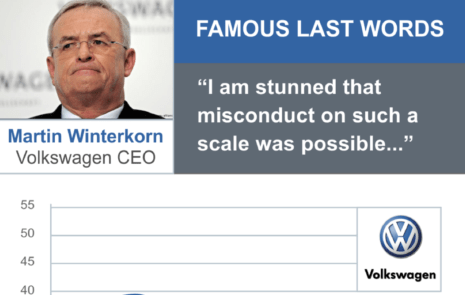
“How to use content marketing to capture our most challenging audience?”
Content marketing to capture our most challenging audience is a key concern among content marketers.
A marketer from Gogo Air asked, “How to use content marketing to capture our most challenging audience?” It’s one of the Top 100 Questions on content marketing.
How marketers win over key audiences varies by market and company. For example, a healthcare company’s best practices may not work in a financial firm.
That said, these are the right questions to ask when you need to win over a key audience. To clarify this question for our clients, we ask:
- Who’s your most challenging audience?
- Do we have research or insights on how they differ from other audiences?
- What are the root causes of the challenge? What is it that makes this audience so hard to reach?
Approach content marketing step by step
Successful content marketing is a step-by-step process. In general, we need to learn everything we can about each of our audiences – their pain points, their needs, and the questions they seek answers for.
In the content marketing process, marketers need to help buyers take 6 distinct steps:
- Win buyers’ attention quickly.
- Teach buyers before you sell.
- Answer every single question.
- Make it easy for buyers to compare choices.
- Convert buyers into subscribers.
- Convert subscribers into customers and repeat customers.
Since you can lose your audience at any one of these steps, let’s take them one at a time to improve your odds of capturing your audience.
1. Win buyers’ attention quickly
You will capture buyers’ attention when you:
- Meet buyers where they usually consume information (rather than trying to get them to form a new media consumption habit).
- Present information in the media they prefer. Note that buyers’ preferred media types vary by the stage of the buyer’s journey, as you see below.
- Present an on-point, emotional, customer-centric message that tells buyers: What’s in it for them? Provide buyers 3 reasons to believe your message.
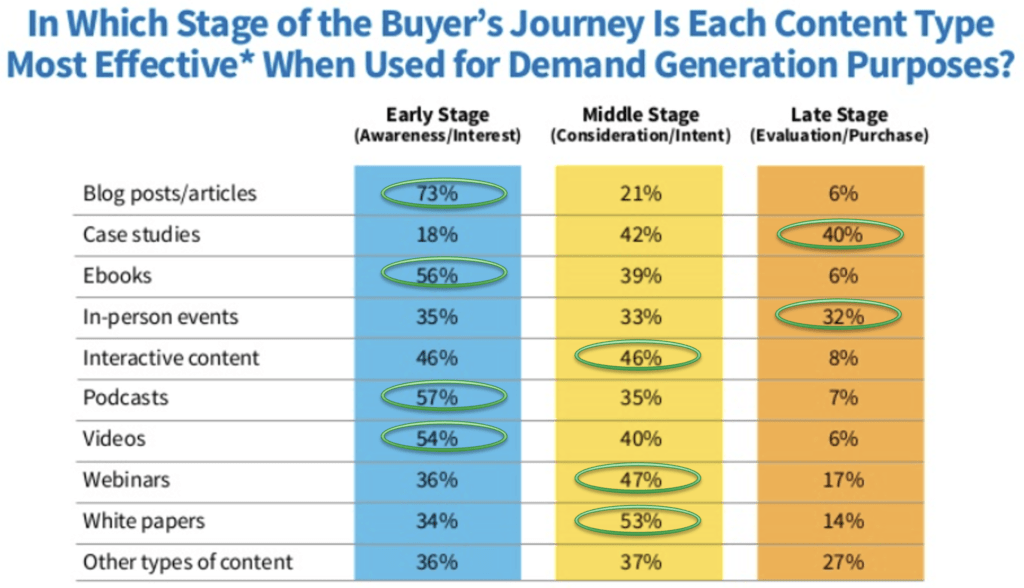
By using buyer persona research, you can find out exactly where buyers go for information and what they are seeking. For example:
- Do buyers choose particular websites?
- Do buyers belong to professional or trade associations?
- Are buyers seeking ideas from peers?
- Do buyers use digital media such as search engines, websites, or apps?
- Which social media do buyers frequent if any?
- Do buyers attend virtual or physical events?
- Are buyers reading trade or professional journals?
- Do buyers rely on certain books for key information?
2. Teach buyers before you try to sell
The whole idea of content marketing is to help buyers by gathering all the information they need to make a good buying decision. That means you need to teach before you try to sell.
Why? Because people start shopping by looking for answers first. Also, people like teachers more than they like salespeople.
In fact, about 4 out of 5 B2B buyers consume 3 or more pieces of content before they ever reach out to Sales.
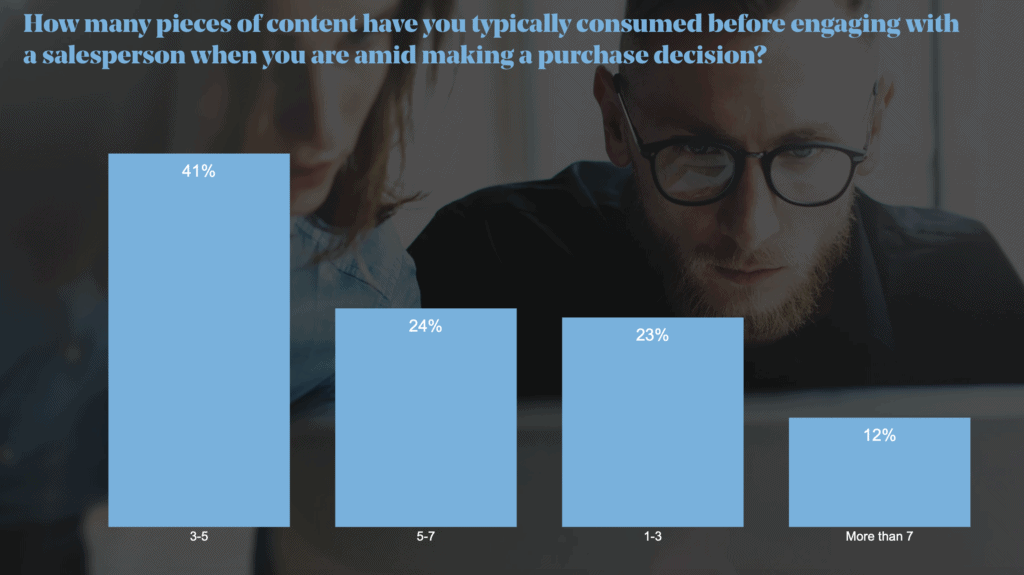
A FocusVision study found that B2B buyers consume 13 pieces of content before choosing a vendor. Here’s where they look for relevant content:
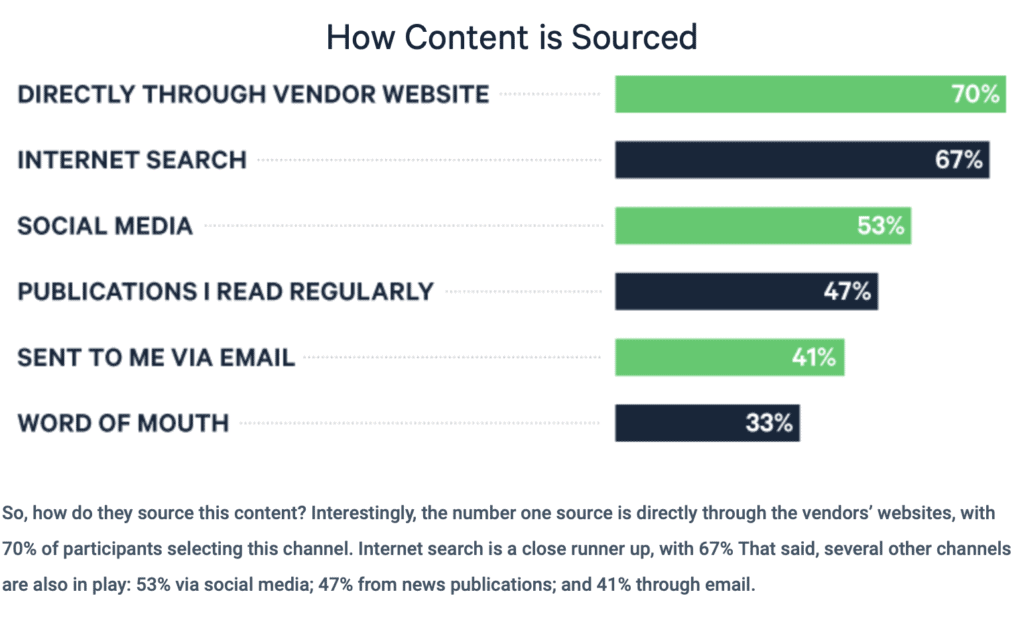
During the pandemic, buyers got comfortable with buying through digital marketing plus self-service or remote sales. They’re even willing to spend $1 million or more with this approach.
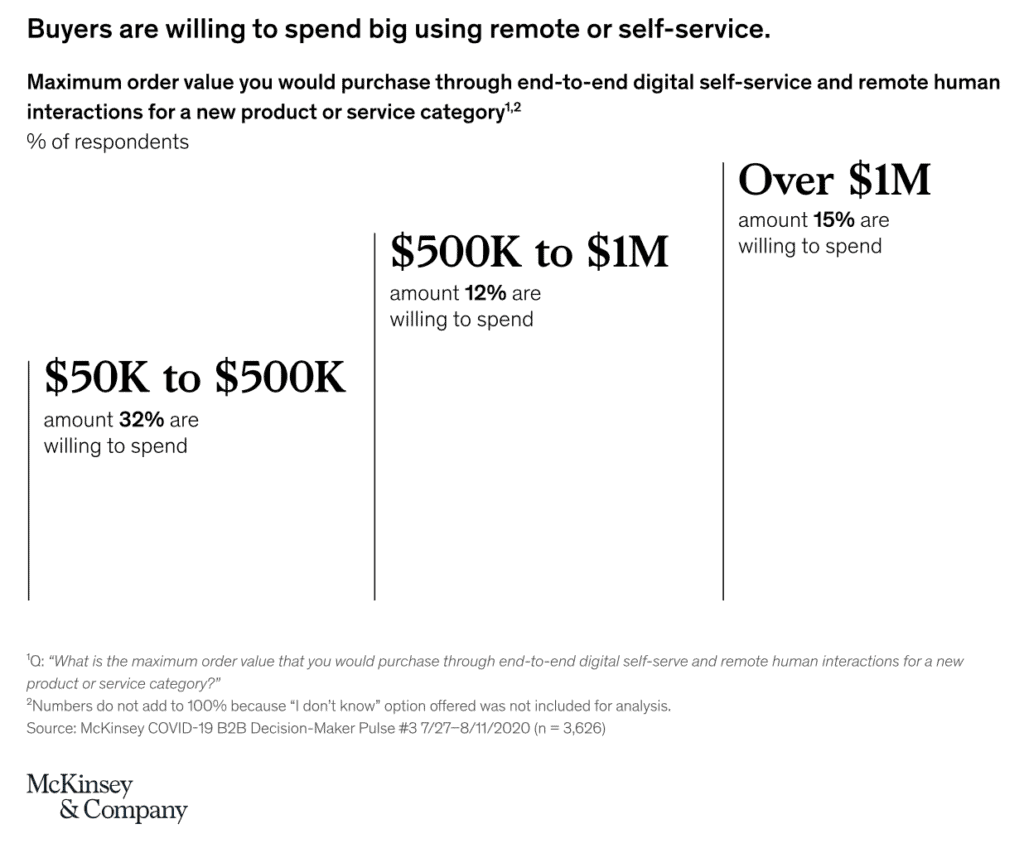
What’s more, buyers expect that these new buying habits will continue going forward.
Since buyers need specific answers to specific questions at each stage in the buyers’ journey, content marketing will continue to flourish.
Teach before you sell. A sales pitch that comes too early is like proposing marriage on the first date. Not cool. And highly unlikely to succeed. Teach before you sell to use content marketing to capture our most challenging audience
3. Answer every single question
Most of the buying process is a hunt for good answers. The better you know your buyers’ exact questions, the more salient your content becomes.
Here’s the key: There is no such thing as a stupid question.
There are marketers who stupidly try to get away with ducking key questions. But that never plays with smart buyers. Instead, answer their questions straight up.
That’s why we answer marketers’ Top 100 content marketing questions in our blog. Your questions teach us what you want to know.
To help you harvest customer questions and convert them into compelling content, read this blog.
4. Make it easy for buyers to compare choices
After buyers have their questions answered on a carefully considered purchase, they begin to compare vendors from a list. Buyers’ goal is to narrow the list of potential sellers into a shortlist of 2 or 3 sellers.
The more you can do to simplify buyers’ comparison process, the better. Many consumer e-commerce sites enable buyers to compare 3 or 4 products on price, performance, and quality.
What can you do if your company’s legal department is unwilling to compare your brands to other brands? At a minimum, compare all your company’s offerings with each other to make the buyers’ job easier.
Here are some ideas on how to do great comparisons to help buyers.
5. Convert buyers into subscribers
To turn buyers into subscribers takes two steps.
First, make sure your content, your editorial product, is truly competitive. An outside-in content audit shows what competitors offer so you can make your content stand out.
Second, you need to market subscriptions effectively. Make it easy for people to sign up for your blog — with tools such as “forward to a friend,” easy blog sign-ups, and pop-ups. Also, solicit subscriptions at virtual and live events.
Make “subscribers gained” one of your key metrics for content marketing. That’s how you’ll get the most out of your owned content — websites, apps, print, and email. Here are 4 ideas to help you win more subscribers.
6. Convert subscribers into customers and repeat customers
Finally comes the pay-off of content marketing. As you get more readers to read additional content, you’ll win subscribers.
Qualify subscribers by determining which topics they’re interested in, tracking their content usage, and making the right offers at the right time.
Reach out to mega-content consumers by phone to see if they have an urgent need, buying authority, and budget. This qualification can take place in marketing through your demand generation manager, or in sales.
To capture your most challenging audience, work through the 6 steps in the content marketing process one by one:
- Win buyers’ attention quickly.
- Teach buyers before you sell.
- Answer every single question.
- Make it easy for buyers to compare choices.
- Convert buyers into subscribers.
- Convert subscribers into customers and repeat customers.
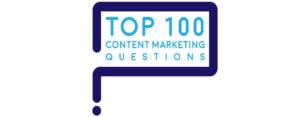
We answer your Top 100 Questions on Content Marketing in our blog.
How to use content marketing to capture our most challenging audience.
Related Posts
Top 100 Content Marketing Question: How to measure sources of content marketing?
Content marketing is a hungry beast Why are marketers always on the lookout for sources of content marketing ideas? Because our audiences are always...
Content marketing messages with too much “me” are doomed to fail
Too many content marketers approach their marketing message from the wrong viewpoint – their own, rather than their customers’ viewpoint. That’s a huge mistake....
How Much Does a Cover-Up Cost?
The Volkswagen dirty diesel cover-up cost $17 billion. The first day. Since then, another $25 billion in costs have piled up. No one knows how long the...
News media interview? Read these tips to be a great spokesperson.
Great news! Your company scored a news media interview, a great chance to get your company’s story heard. And they’ve chosen you as the...



